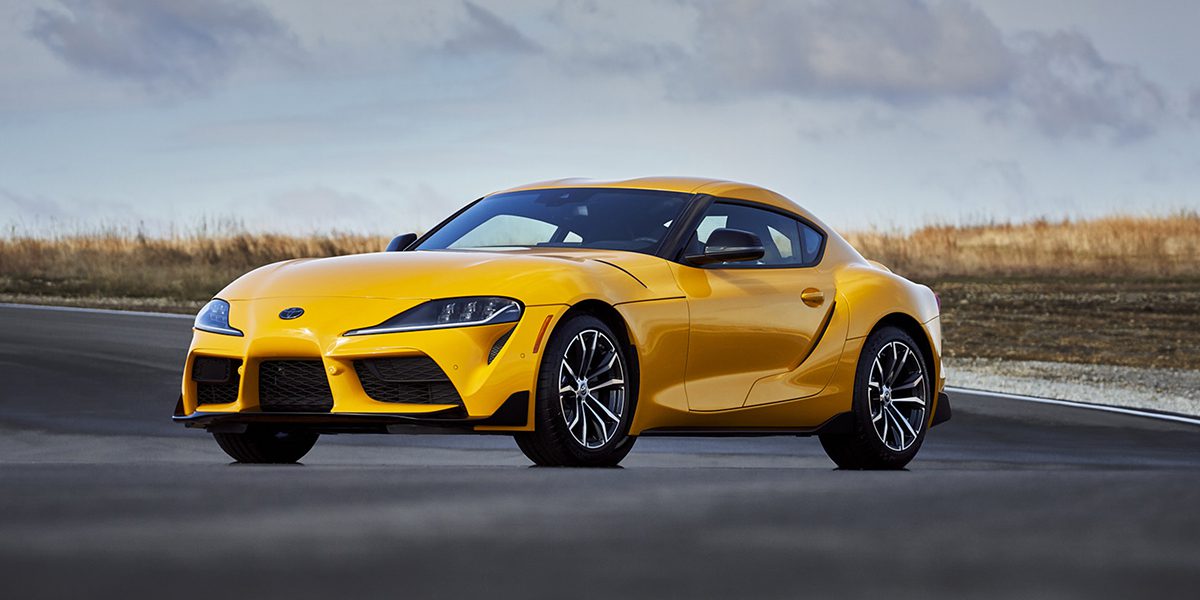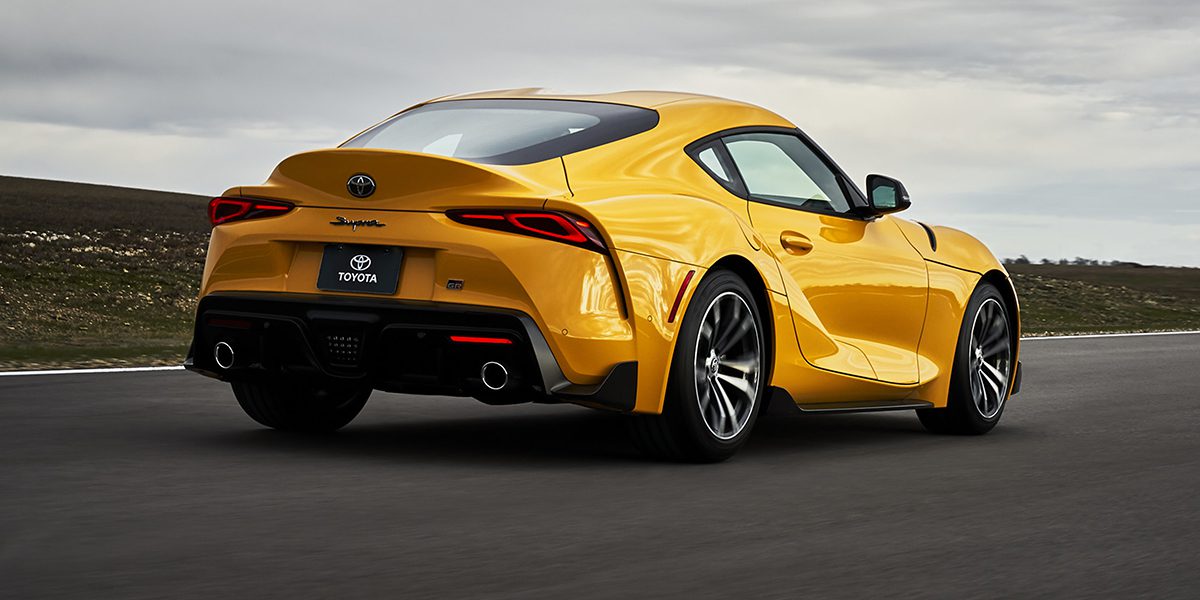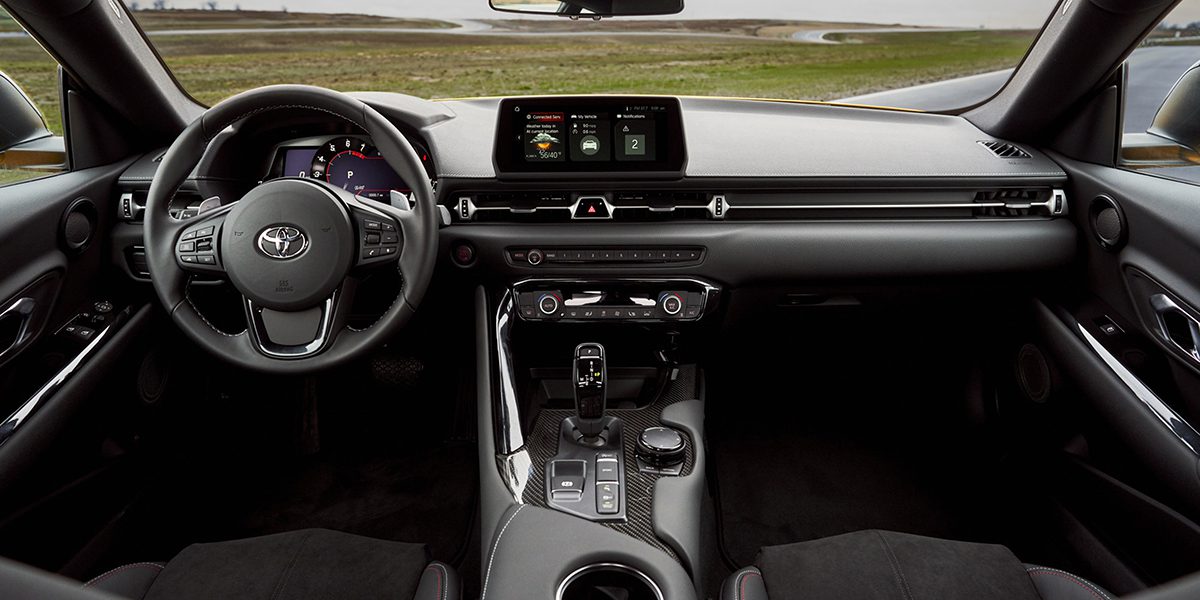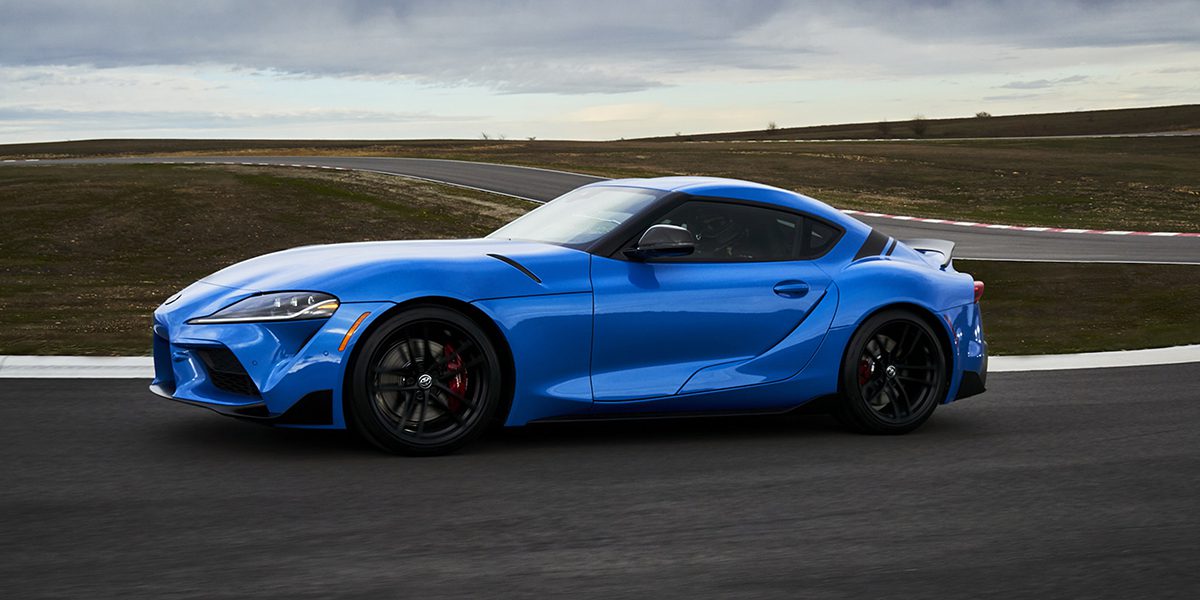IT’S A BEST BUY BECAUSE:
The Supra delivers racetrack-ready performance capabilities, and it’s also balanced and reasonably comfortable in everyday driving.
BUT…
It’s not a “pure” Toyota, passenger and cargo space is expectedly cozy, and a manual transmission isn’t available.
WORTH NOTING:
The new Supra’s full name is GR Supra. The “GR” stands for GAZOO Racing, a Toyota motorsports division. Toyota lists the 6-cylinder Supra’s 0-60-mph time at 3.9 seconds, with an electronically limited track top speed of 155 mph.
WHAT IS IT?
Toyota revived its Supra nameplate for 2020 on a two-seat, rear-wheel-drive sports car powered by an inline 6-cylinder engine. However, unlike previous Supras, the new one is the product of a joint venture—Toyota partnered with German automaker BMW in the development process, and the new Supra shares its basic structure and powertrain with BMW’s redesigned-for-2019 Z4 two-seat roadster. For 2021, a 255-hp turbocharged 2.0-liter 4-cylinder engine joins the line, and the 3.0-liter six gets a bump from 335 to 382 hp. The Supra comes only as a hardtop coupe, in 2.0, 3.0, 3.0 Premium, and limited-production A91 Edition models.
Standard on 6-cylinder models are Adaptive Variable Suspension, variable-assist/variable-ratio sport-tuned electric power steering, and an active differential that uses an electric motor and multi-plate clutches to control torque distribution between the rear wheels. Four-cylinder models make do with a fixed suspension and a non-limited-slip rear differential. Also standard on 6-cylinder models are 19-inch forged aluminum wheels with Michelin Pilot Super Sport tires (wider in the rear than in the front), and performance disc brakes (with 13.7-inch rotors and 4-piston Brembo calipers in front). Four-cylinder models get 18-inch alloys and smaller, less-aggressive brakes. A Sport Mode drive setting dials in sharpened throttle response, crisper shifts from the transmission, a weightier steering feel, more aggressive active-differential tuning, reduced intervention of the traction and stability control systems, and an amplified exhaust note. Parking sensors, adaptive cruise control, and a blind-spot monitor with rear cross-traffic alert are available on all Supras.
WHAT’S NEW?
In addition to the powertrain and trim-level updates mentioned above, the Supra 3.0 models receive revised chassis tuning and under-hood strut-tower braces, and an 8.8-inch infotainment screen is now standard on all models. The A91 Edition essentially replaces last year’s Launch Edition model; it is limited to 1000 units and includes unique interior and exterior trim.
FUEL ECONOMY
The Supra is rated at a respectable 25 mpg city/32 highway with the 4-cylinder engine, and 22/30 with the 6-cylinder. In Consumer Guide® testing, a Supra 2.0 averaged 28.0 mpg in 70-percent highway driving, and a 3.0 Premium averaged 24.2 in 60-percent highway driving. Premium-grade gas is required for both engines.
VALUE IN CLASS
Toyota purists may be upset at the infusion of German DNA into a beloved Japanese nameplate, but if it doesn’t upset your brand loyalty, the Supra has a lot to offer. It’s equally engaging on the track and on the street, and compared to its class rivals, it’s a good value. The new-for-2021 2.0 model is down on horsepower and features, but it’s engaging nonetheless, and it’s $8000 cheaper than the entry-level 3.0. On paper, the Supra doesn’t boast the outright brawn of some rival high-performance cars, but from behind the wheel, it should satisfy the most discerning drivers.
| BASE PRICE RANGE | $42,990 – $54,795 |
| BODY STYLES | 2-Door Coupe |
| AVAILABLE ENGINES | Turbocharged 255-HP, 2.0-Liter 4-Cyl.; Turbocharged 382-HP, 3.0-Liter 6-Cyl. |
| DRIVE WHEELS | Rear-Wheel Drive |
| BUILT IN | Austria |
| EPA FUEL-ECONOMY RANGE | 22-32 MPG |




